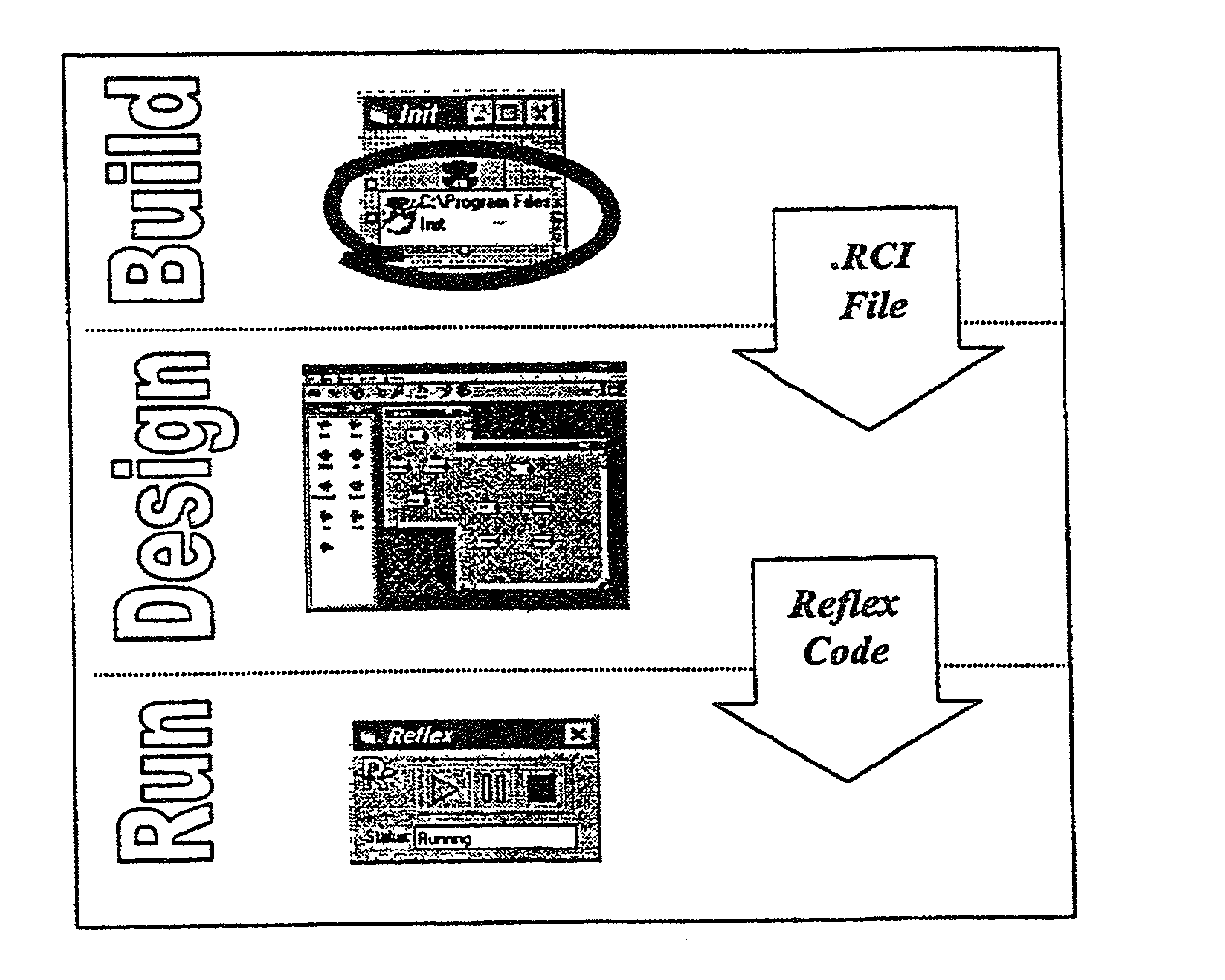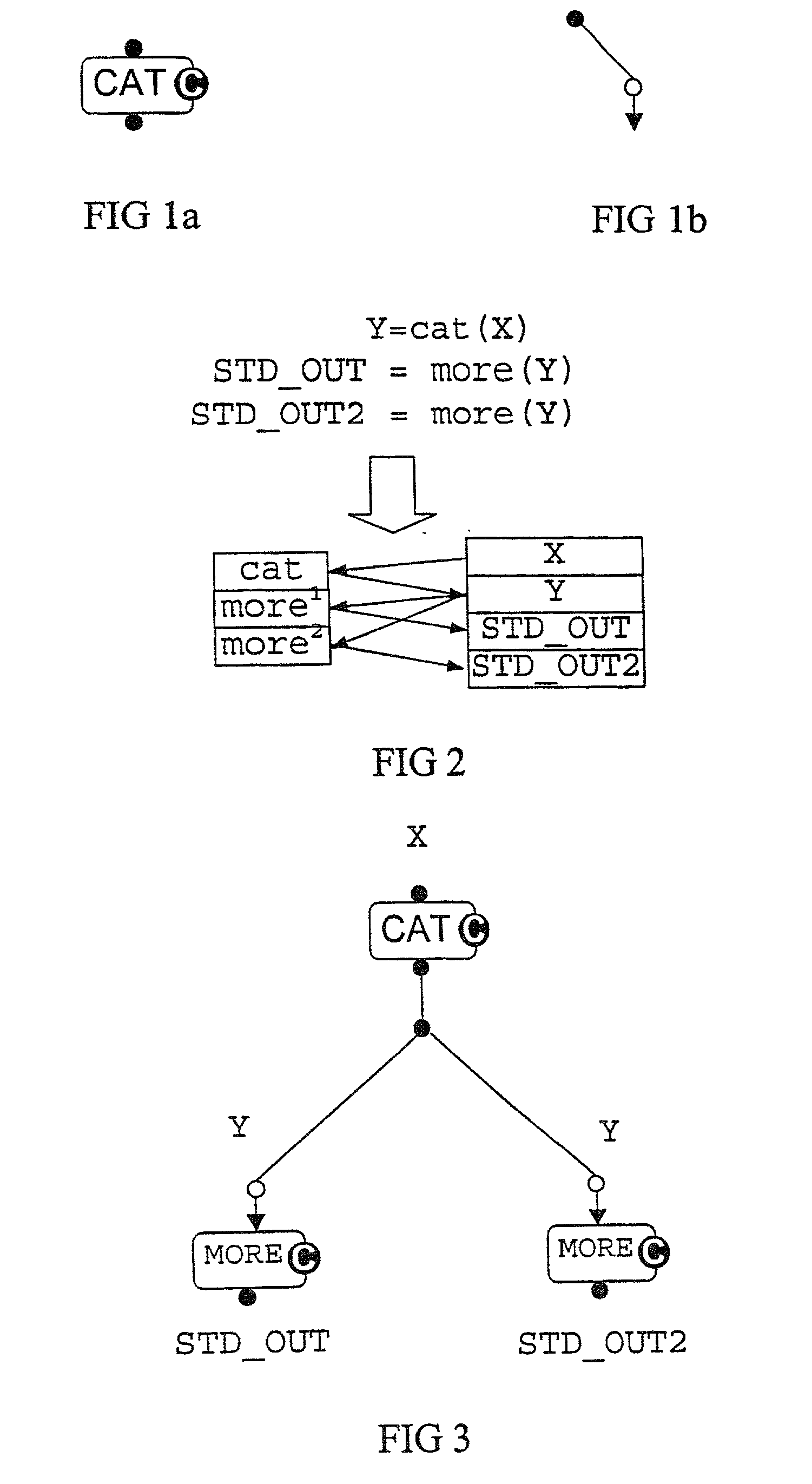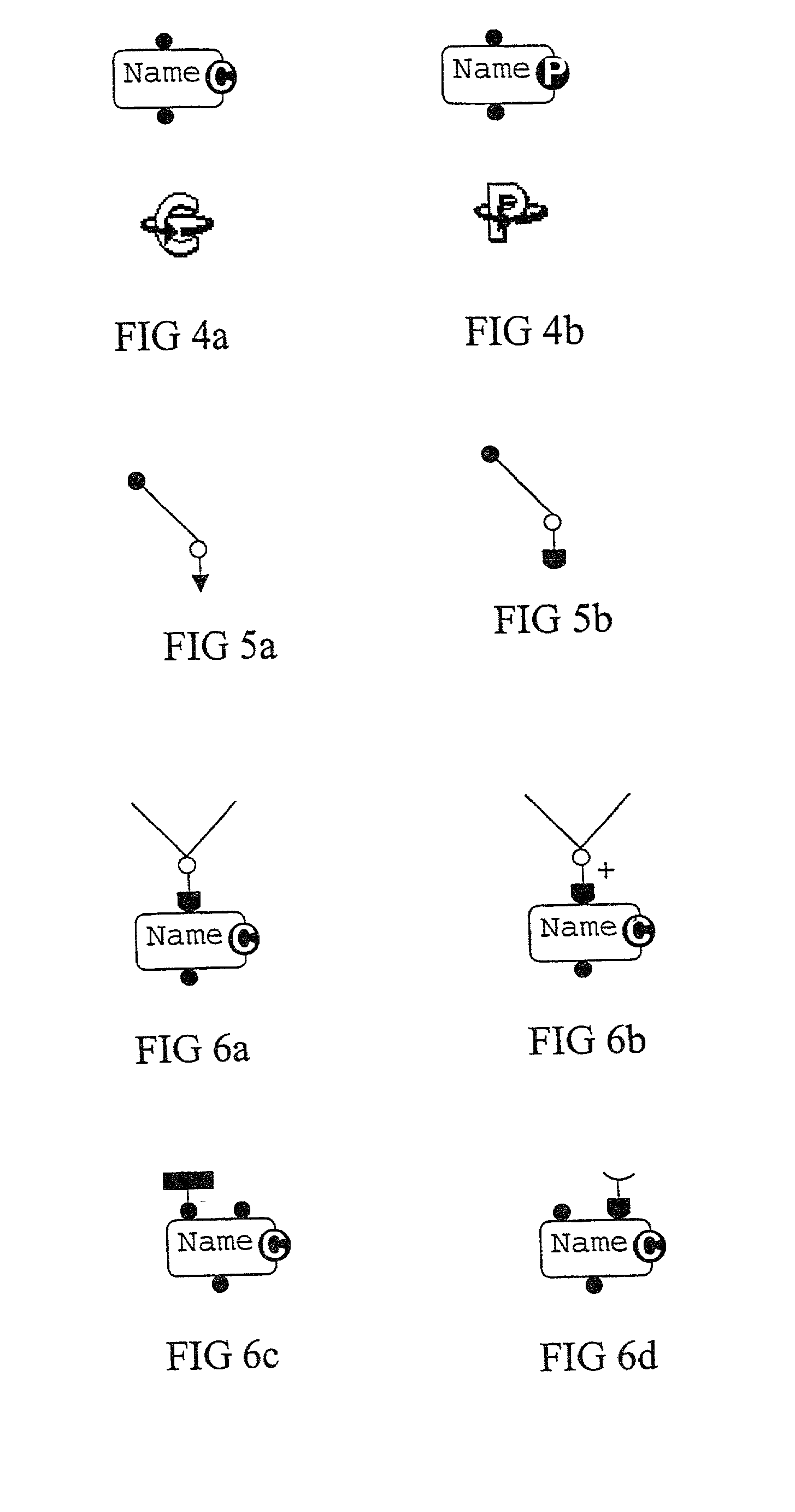Visual architecture software language
a software language and software technology, applied in the field of visual architecture software language, can solve the problems of destroying the inherent architecture of the system, and difficult to understand and change software systems
- Summary
- Abstract
- Description
- Claims
- Application Information
AI Technical Summary
Benefits of technology
Problems solved by technology
Method used
Image
Examples
example 2
[0073] A natural extension of example 1 is the feed back loop shown in FIG. 9. Component A may use its own transformed data for further processing or for possibly recursive transformations. Although this may seem obvious it is not always a supported behavior in many integration models.
example 3
[0074] FIG. 10 displays the effect of memory buffering on the data flow. Components B and C may be sharing data directly or the data may be stored in a memory buffer. The buffer can be set up to hold a single item that is overwritten as new data becomes available. Alternatively, the buffer may be a shared buffer that holds a collection of items for use by all downstream components. Finally, the buffer may be unique and independent for each downstream component. The type of buffering employed affects the behavior of the process.
example 4
[0075] Two components may send data to a single downstream component, C, as shown in FIG. 11. Two possibilities, an `OR` or an `AND` relationship, are shown. If an `OR` relationship is in use then input from either component A or B will trigger C. However, if an `AND` condition is in place then input must come from both upstream components. This characteristic is particularly useful when trying to synchronize data streams or when confirmation is needed that a data buffer is available.
[0076] In the scenario where a single downstream component receives two or more input channels, it is possible to turn data priority on for any or all of the data sources. Data priority will ensure that the currently active input channel's buffer is emptied or exhausted by the downstream component before it relinquishes control to an alternative input source. This allows uninterrupted processing of any given data source.
PUM
 Login to View More
Login to View More Abstract
Description
Claims
Application Information
 Login to View More
Login to View More - R&D
- Intellectual Property
- Life Sciences
- Materials
- Tech Scout
- Unparalleled Data Quality
- Higher Quality Content
- 60% Fewer Hallucinations
Browse by: Latest US Patents, China's latest patents, Technical Efficacy Thesaurus, Application Domain, Technology Topic, Popular Technical Reports.
© 2025 PatSnap. All rights reserved.Legal|Privacy policy|Modern Slavery Act Transparency Statement|Sitemap|About US| Contact US: help@patsnap.com



